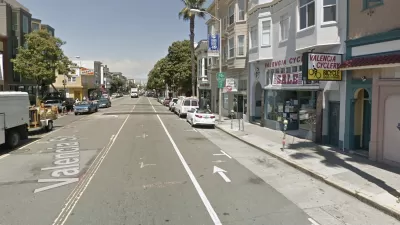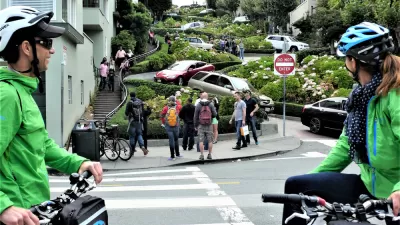Additional disincentives for driving (i.e., congestion pricing and new parking fees) are on the mayor's agenda in San Francisco.

"Car-free Market Street was the first step, but traffic in downtown San Francisco is often still a nightmare at rush hour," writes Madeline Wells.
Mayor Breed is arguing for congestion pricing as an additional measure to reduce automobile trips around the city. Mayor Breed called for congestion pricing in a letter to the San Francisco Municipal Transportation Agency’s Board of Directors.
According to Wells, Mayor Breed is specifically calling for tolls on busy roads at peak times as well as charges for street parking on Sundays and evenings. Mayor Breed targeted SoMa (South of Market) and Downtown for the reforms.
"Already, the San Francisco County Transportation Authority is considering charging a fee to drive in these areas during rush hour, with an expectation to release proposals on the topic early next year. However, the introduction of these measures would require San Francisco to pass legislation that allows the city to charge fees for the use of public roads," according to Wells.
Rachel Swan originally reported the news about Mayor Breed's advocacy for congestion pricing in a paywalled article for the San Francisco Chronicle.
San Francisco is already among the nationwide leaders in wielding planning tools to reverse the dominance of automobiles in urban areas. New York City blocked car traffic on 14th Street in Manhattan, like San Francisco did on Market Street, and is moving forward with a congestion pricing scheme with support from the city and the state.
FULL STORY: London Breed presses for Sunday and evening parking meters, congestion pricing

Maui's Vacation Rental Debate Turns Ugly
Verbal attacks, misinformation campaigns and fistfights plague a high-stakes debate to convert thousands of vacation rentals into long-term housing.

Planetizen Federal Action Tracker
A weekly monitor of how Trump’s orders and actions are impacting planners and planning in America.

San Francisco Suspends Traffic Calming Amidst Record Deaths
Citing “a challenging fiscal landscape,” the city will cease the program on the heels of 42 traffic deaths, including 24 pedestrians.

Defunct Pittsburgh Power Plant to Become Residential Tower
A decommissioned steam heat plant will be redeveloped into almost 100 affordable housing units.

Trump Prompts Restructuring of Transportation Research Board in “Unprecedented Overreach”
The TRB has eliminated more than half of its committees including those focused on climate, equity, and cities.

Amtrak Rolls Out New Orleans to Alabama “Mardi Gras” Train
The new service will operate morning and evening departures between Mobile and New Orleans.
Urban Design for Planners 1: Software Tools
This six-course series explores essential urban design concepts using open source software and equips planners with the tools they need to participate fully in the urban design process.
Planning for Universal Design
Learn the tools for implementing Universal Design in planning regulations.
Heyer Gruel & Associates PA
JM Goldson LLC
Custer County Colorado
City of Camden Redevelopment Agency
City of Astoria
Transportation Research & Education Center (TREC) at Portland State University
Jefferson Parish Government
Camden Redevelopment Agency
City of Claremont





























